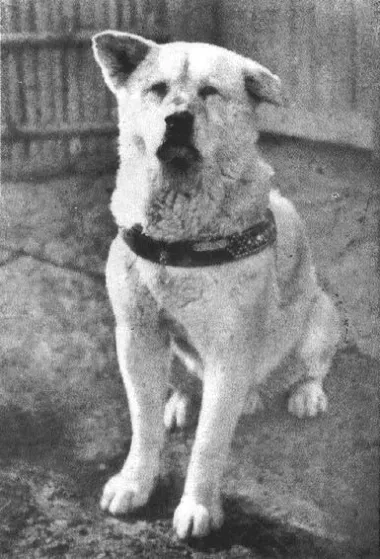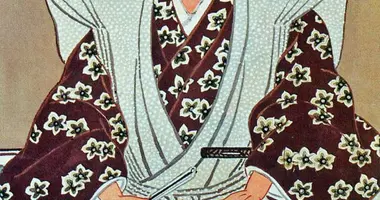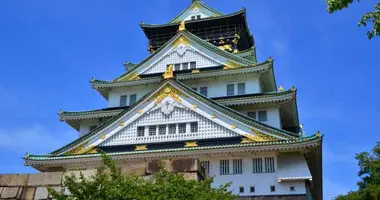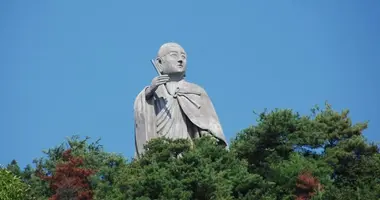Hachikô, faithful dog ハチ公
- Published on : 20/08/2019
- by : C.V/ Ph.L
- Youtube

Hachiko, one of Yamanote's mascots
flick/treneuroni
The story of the dog that moved all of Japan
The beloved Hachikô is the Akita (Akita-ken) who waited loyally for his deceased master at Shibuya station until his own death. In Japan, Hachikô is a star. The history of the "faithful dog" is known to all, and statues have even been erected in his honor in several places of the archipelago. It sits proudly in Shibuya, where it all started ...
The story of Hachikô, the "faithful dog"
In 1923, Hidesaburo Ueno, professor of Agriculture at the University of Tokyo, adopted an Akita born a few months earlier in Odate, Akita Prefecture.
The eighth puppy of the litter, thus given the name of Hachikô (coming from "hachi", number eight). A name that will mark the spirits of the years later, when the puppy becomes an adult will show one of the most beautiful devotions that the country of the samurai has known.
Since the birth of Hachikō in 1923, the professor took the Yamanote line from Shibuya to go to work. A daily trip that he never took alone, as Hachiko accompanied him every morning to the station, then returned every evening waiting for the arrival of his master, to greet him and walk home with him. Unfortunately on May 21, 1925, Hidesaburo Ueno died of a stroke at university and did not return.
Faithful to a fault, the Akita will nevertheless continue its daily ritual of walks between the home and the station for nine years , until his own death in 1935, in one of the alleys near the station.
In the early 1930s, the story of Hachikô was published in the press. Very quickly, many Japanese came to bring food to Shibuya station for the one we then called Chûken , “the faithful dog” . The craze for the akita is such that it does not decline over the years, and a statue in his honor is even erected in 1934 where Hachikô faithfully waited for his master at the Shibuya station.
Hachikô, the mascot of Shibuya
Most Japanese are quite familiar with Hachiko's statue at Shibuya station. And to pay tribute to the unfailing loyalty that the animal had for its master, the first bronze statue bearing the effigy of the Akita was erected in 1934 in front of the station. Unfortunately, when the war broke out, the statue was melted down as a resource to support the war effort, and the second statue of Hachikô was again reinstalled in 1948.
Today, the Hachikô statue is a must-see in Shibuya. It's a great landmark for anyone wanting to meet their friends in front of the neighborhood's massive train station, and it's a great photo spot for anyone who is aware of the history of Japan's most famous and favorite dog.
Passers-by adore and worship the statue, which is regularly decked out in beanies and scarves during winter by many, as a sign of respect.
The image of Hachiko is also a compassionate symbol for elderly animals, as it plays a role in the propaganda of charitable associations helping "man's best friend" in need.
Japan's most famous dog
If Hachikô is associated with Shibuya, it should be noted that there are also traces of the legend of the faithful dog outside the district. The animal's (stuffed) body is kept at the Tokyo National Museum of Nature and Science, and another statue of the faithful dog has been erected in front of Odate Station, the birthplace of the Akita.
On the occasion of the 90th anniversary of the death of Professor Ueno, the Department of Agriculture at the University of Tokyo has also erected its own statue: that of the professor and his dog finally reunited.
Finally, it should be noted that Hachikô has been immortalized twice in the cinema: in the Japanese film Hachikô Monogatari (1987) by Seijiro Koyama, and the American film "Hachi: A dog's tale" (2009) by Lasse Hallström.
There's no doubt that Hachikô is indeed the most famous and beloved dog in Japan!
Trailer of the film Hatchi by Lasse Hallström
Address, timetable & access
Address
Timetable
Hachikô exit from Shibuya station


















